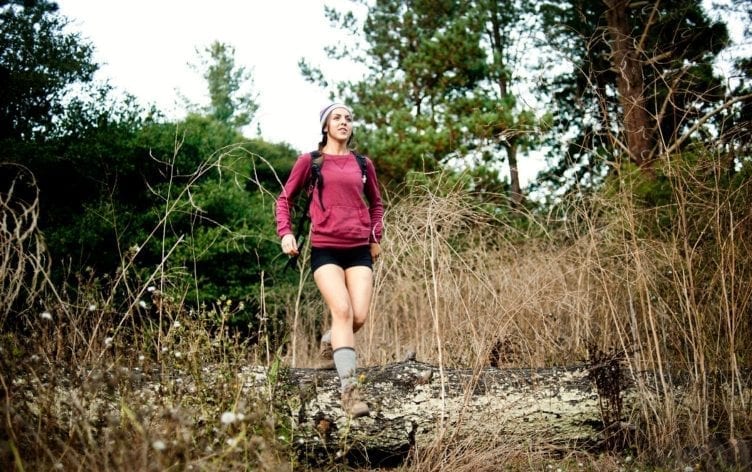There are so manyreasons to love walking— it has a low barrier to entry,improves cardiovascular health, and can be a great way to stay connected withfriends and family in personorvirtually. Now,new research showsthere’s a way to enhance the mental health benefits of walking even more with a technique called awe walking, which was designed specifically to increase positive emotions during exercise.
THE SCIENCE OF AWE
Researchers from the UC San Francisco Memory and Aging Center and the Global Brain Health Institute recently publisheda study in the journal Emotionlooking at the benefits of a 15-minute awe walk compared to a regular stroll.
According to researchers, awe is defined as “a positive emotion triggered by awareness of something vastly larger than the self that may not be immediately understandable — such as art, nature, music or a collective act.” Experiencing awe yields a host of benefits, ranging from an expanded sense of time and feelings of generosity to well-being and humility.
The goal of an awe walk is to shift attention away from yourself and appreciate the wonders of the world around you that can be found almost anywhere. Participants who added two weekly 15-minute awe walks, in which they walked somewhere new and took time to marvel at their surroundings, reported more appreciation of the world around them and a greater awareness of nature’s beauty than those who took regular 15-minute walks. In turn, the former group showed an increase in positive emotions such ascompassion, gratitude andimproved mood level. The latter group, however, retained an inward focus on things like work and chores when asked to describe their thoughts during the walks.
HOW YOU CAN BENEFIT FROM AWE WALKS
While some of the ways you might normally experience awe (such as going to a museum or a concert) are limited during the pandemic, most people are still able toget outdoorsandenjoy nature. Moreover, “awe walks are an easily accessible way to combat common mental health issues, particularly as we age,” says Virginia Sturm, PhD, one of the lead researchers of the study and professor at the UCSF Weill Institute for Neurosciences. “Negative emotions, particularlyloneliness, have well-documented negative effects on the health of older adults, especially those over the age of 75,” says Sturm. “What we show here is a very simple intervention — essentially just a reminder to occasionally shift our energy and attention outward instead of inward — can lead to significant improvements of well-being.” Previous studies have shown people who feel awe tend to haveless stressandlower inflammation markers.
While treatments that involve medications or therapy sessions can be costly, awe walks are easy and free. Even though much Sturm’s research revolves aroundtreating Alzheimer’sand the mental health of elderly patients, the benefits of awe walking could similarly extend to people of all ages — and seem particularly relevant during a time of crisis such as theCOVID-19 pandemic.
“I find it remarkable that the simplest intervention was able to drive significant shifts in daily emotional experiences,” says Sturm. “And it’s such a simple practice. Just take a moment to pause and consider the marvels that surround you. A little more joy and a little more connectedness with the world around us is something we could all use.”
HOW TO GET STARTED
To add awe walks to your routine, start with two 15-minute walks until it’s a consistent habit. From there, you can always increase the duration or frequency as desired. Here are some guidelines Sturm recommends:
- Walk alone for at least 15 minutes at a light-to-moderate pace.
- Minimize distractions like phone usage, music or audiobooks.
- Try to see the world through the eyes of a child, as if you are seeing things for the first time. Appreciate the vastness of things, enjoy the panoramic views or the closeup detail of a flower or leaf.
- Each week, walk somewhere new. You are more likely to feel awe when the environment is unfamiliar. A mountain with sweeping views, a trail lined with trees, a clear night when you can see the stars, or a path near an ocean, lake or river are all good options. For urban settings, appreciate the architecture, the top of a skyscraper, a historic monument or an area with a botanical garden.
To become more active, try setting a simple goal to increase (and track) your daily steps. Go to“Plans” in the MyFitnessPal appand choose a 28-day step plan to learn tips to boost your activity.

